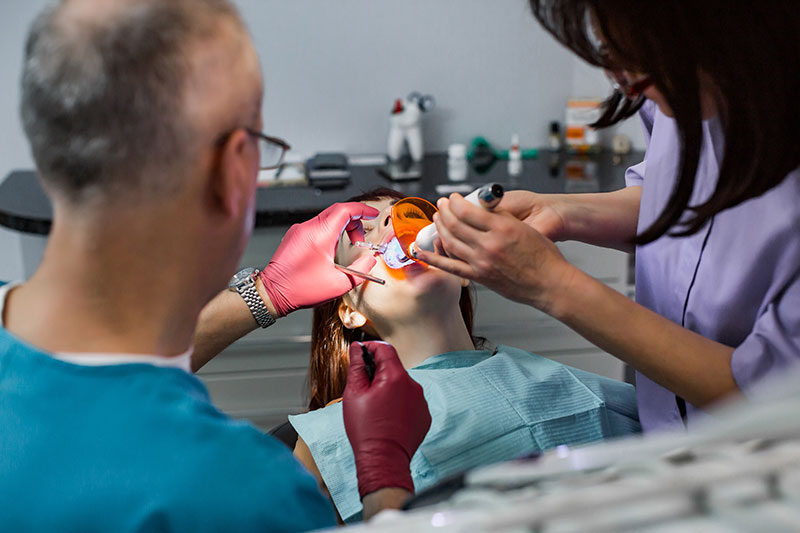What is Restorative Dentistry
Your smile is a cornerstone of your health, confidence, and daily interactions. But over time, decay, injury, or simple wear and tear can compromise its structure and function. When teeth become damaged or lost, it can affect everything from your ability to chew comfortably to your willingness to share a laugh. This is where restorative dentistry comes in. At Superior Dental Health of Lincoln, we see it as the art and science of bringing a smile back to life.
But what exactly does “restorative dentistry” mean? It’s a term that encompasses a wide range of dental treatments, all sharing one common goal. At its core, restorative dentistry brings back your smile to full health, function, and beauty. It focuses on diagnosing and treating conditions that affect the teeth and their supporting structures, aiming to repair damage and replace missing teeth.
Defining Restorative Dentistry: What is the Main Goal?

While fixing a broken tooth is a key part of the process, the philosophy behind restorative dentistry runs much deeper. It’s about looking at your mouth as a complete, interconnected system where every tooth plays a vital role in your overall well-being. A damaged or missing tooth isn’t just a cosmetic issue; it can trigger a cascade of other problems, including shifting teeth, bite misalignment, and even bone loss in the jaw.
The primary goal is to preserve natural teeth whenever possible and restore the entire oral system to a state of optimal health. This involves:
- Restoring Function: Ensuring you can bite, chew, and speak properly without pain or discomfort.
- Improving Oral Health: Removing decay, treating infection, and closing gaps where harmful bacteria can accumulate, thus preventing future problems.
- Enhancing Aesthetics: Creating repairs and replacements that look natural and blend seamlessly with your existing smile.
[Related: What to Know About Dental Implants]
The Procedures Involved: What is Restorative Dentistry in Practice?
Restorative dentistry addresses various levels of damage through different methods of treatment. Your dentist will recommend the best solution for you, from minor repairs to complete tooth replacement. At Superior Dental, our approach is to tailor a treatment plan that addresses your unique situation.
Here are some of the most common restorative procedures:
- Dental Fillings: This is the most common restorative treatment. When a tooth develops a cavity, a filling is used to remove the decayed portion and “fill” the space with a durable material, typically a tooth-colored composite resin.
- Dental Crowns: A crown, or “cap,” is a custom-made covering that fits over a severely damaged or weakened tooth. It’s used to restore the tooth’s shape, size, strength, and appearance after a large fracture, extensive decay, or a root canal.
- Dental Bridges: When one or more teeth are missing in a row, a bridge can be used to fill the gap. It typically consists of one or more artificial teeth anchored in place by crowns on the adjacent natural teeth.
- Dental Implants: Considered the gold standard for tooth replacement, a dental implant is a small titanium post that is surgically placed into the jawbone to act as a new tooth root. It is then topped with a realistic crown, providing a stable, permanent, and natural-feeling solution.
- Dentures: For more extensive tooth loss, dentures offer a reliable solution. They can be either full (replacing all teeth on an arch) or partial (replacing a few missing teeth) and are designed to be removable.
Each of these treatments is designed to solve a specific problem, from a small cavity to complete tooth loss.
Understanding Who Needs Restorative Dentistry

You might be wondering if restorative dentistry is right for you. The answer is simple: it’s for anyone whose smile is compromised by damage or tooth loss. You may be a candidate if you are experiencing any of the following:
- You have cavities or old, failing fillings.
- You have a chipped, cracked, or broken tooth.
- You are missing one or more teeth.
- You have significant wear on your teeth from grinding.
- You experience pain or difficulty when chewing.
- You feel self-conscious about gaps or damage in your smile.
Essentially, if you have teeth that are not healthy, functional, or present, you are a candidate for restorative dentistry.
[Related: Types of Dental Crowns]
What is the First Step in Restorative Dentistry?
Restorative dentistry is about more than just fixing problems—it’s about renewing your confidence and protecting your long-term oral health. Whether you need a simple filling or a more complex solution, like a dental implant, modern techniques and materials can restore your smile to its natural strength and beauty.
If you are living with dental pain, damage, or missing teeth, don’t wait for the problem to get worse. Taking the first step toward restoring your smile is an investment in your long-term health and well-being. To learn more about your options, schedule a consultation with the experienced team at Superior Dental Health of Lincoln, and let us help you rebuild the healthy, functional smile you deserve.
